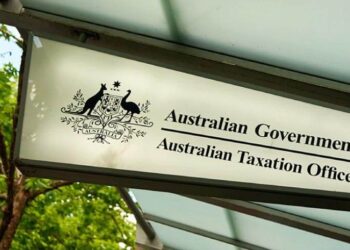Recently the ATO released the 11th edition of the annual statistical overview on self-managed super funds (SMSFs), providing deeper statistics and analysis of Australia’s SMSF sector for the 2018-19 financial year. It also includes data metrics across quarterly reports up to the 2020 financial year.
Heffron managing director Meg Heffron said the publication of this report often triggers commentary about which of the three major superannuation sectors outside the public sector schemes (industry, retail and SMSF) are winning, “in other words, who has the most money and who is growing vs shrinking relative to the other sectors.”
But Ms Heffron said when wondering about the health of the SMSF sector, one of the other factors, the stats can also provide further insight on the real purpose of superannuation – which is to provide retirement incomes.
“According to the latest statistics, the median age of SMSF members is around 60. That means roughly half the SMSF population is eligible to start a pension,” Ms Heffron said in a recent blog.
“And sure enough, around 45 per cent of SMSFs are either entirely or partly in the retirement pension phase. Note that this doesn’t include the funds that are providing transition to retirement income streams as these don’t count as ‘retirement phase’ pensions.
“Hence we’re possibly underestimating the proportion of funds that are genuinely providing an income stream to their members but nonetheless, the figures are reassuringly close.”
Further, Ms Heffron noted there’s a suggestion that the median age in APRA funds is somewhere around early 40s, but noted this is not strictly accurate as it is based on the ages of all the holders of member accounts in these funds and there are around 23 million accounts for (probably) 16 million members.
“A lot of people still have more than one account and if that applies more frequently to younger members than older ones we’re skewing the data by counting them more than once. However, you get the picture – industry fund members are younger. They also have lower balances,” she said.
“So, it’s not surprising that fewer industry and retail fund members are receiving retirement phase pensions.”
That being said, Ms Heffron said she was surprised at the difference that fewer than 7 per cent of member accounts (around 1.5 million) in these funds are paying retirement phase pensions.
“That’s really not many, particularly when you consider that there are over 4 million accounts (just under 20 per cent of all accounts) that belong to people over 60,” she said.
“Some of these people might have both a retirement phase pension account up to their transfer balance cap and an accumulation account (for the rest of their super) but that probably doesn’t explain the large discrepancy.
“I’d love to know why pensions are so under-utilised in industry and retail funds. Is it product design? Lack of awareness? Smaller balances?”
When it comes to what sorts of payments are being taken from SMSFs, the ATO statistics certainly reveal that these have changed significantly since 1 July 2017, according to Ms Heffron.
“Perhaps predictably, transition to retirement income streams (TRISs) have become less popular. Of all the benefit payments taken out of SMSFs in 2016/17, around 8.4 per cent related to a TRIS. In 2018/19, TRIS payments accounted for only 3.2 per cent of superannuation payments,” she said.
The split between pension payments and lump sums has also shifted quite markedly, she noted.
“Back in 2016/17, lump sums accounted for less than 14 per cent of total super payments from SMSFs (and it was at similar levels in earlier years). The figure is more like 30 per cent now. I’d speculate there are several reasons,” Ms Heffron explained.
“Firstly, it’s a sign of good advice for anyone who draws more out of super than the minimum pension payment they are required to take. They are (quite correctly) choosing to take the minimum pension payment and treat any extra amounts as lump sums – either commutations from their retirement phase pension or lump sums from their accumulation account.
“Secondly it’s likely that some members – when closing their SMSF – have opted to cash out their super entirely. They’re not so much making a choice about the type of fund they have, they are making a choice to get out of superannuation.
“This is understandable at a time of quite high personal income tax thresholds and where balances are declining.”



Famously, retail and industry funds do not give advice and they are proud of it. There is so much strategy and education not being passed on to the average person, and they get around it by putting links to the ATO info within their software and expect people to understand it and apply it to their own circumstances.
Perhaps balances in super other than SMSF are relatively low. Retire, take the super, pay off the mortgage and any other loans, modify the house, get a newer car, have a couple of holidays and what is left might not fund a pension. Then rely on the age pension.
Large numbers in ordinary jobs, the 80% on less than Average Weekly Earnings, simply do not have much in super.
Retail and industry funds generally have lower balances. Your choice is therefore pay a large % of your investment in fees to establish a pension or spend 45 minutes on the phone talking to a call centre operator about the funds you have spent 40 years accumulating.
In answer to the question, “I’d love to know why pensions are so under-utilised in industry……….”. It’s because there is no “liability adequacy test” applied to superannuation. The “sole purpose test” means little without this.
Whats the significance of lump sums vs pensions.